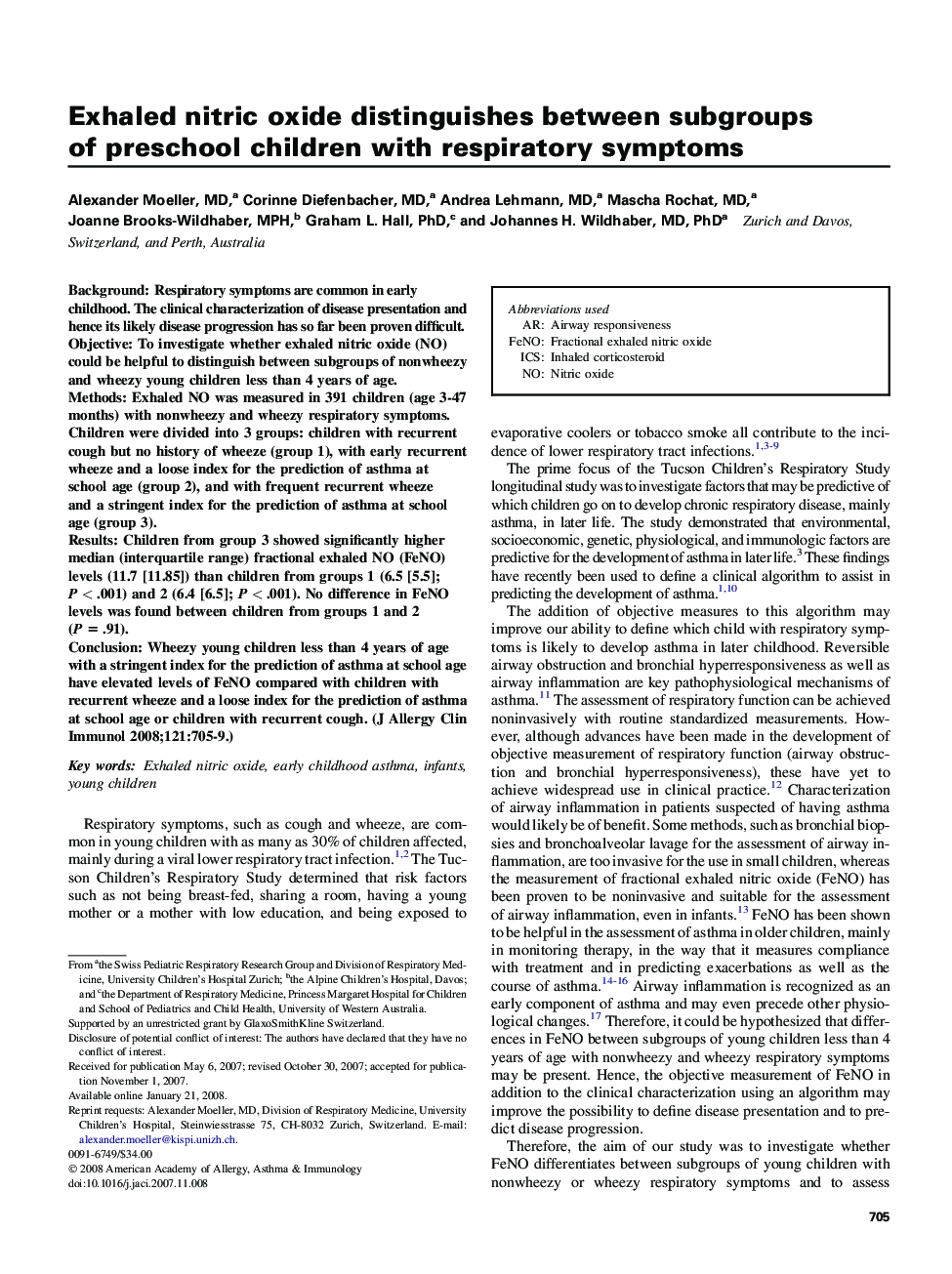| Article ID | Journal | Published Year | Pages | File Type |
|---|---|---|---|---|
| 3200727 | Journal of Allergy and Clinical Immunology | 2008 | 5 Pages |
BackgroundRespiratory symptoms are common in early childhood. The clinical characterization of disease presentation and hence its likely disease progression has so far been proven difficult.ObjectiveTo investigate whether exhaled nitric oxide (NO) could be helpful to distinguish between subgroups of nonwheezy and wheezy young children less than 4 years of age.MethodsExhaled NO was measured in 391 children (age 3-47 months) with nonwheezy and wheezy respiratory symptoms. Children were divided into 3 groups: children with recurrent cough but no history of wheeze (group 1), with early recurrent wheeze and a loose index for the prediction of asthma at school age (group 2), and with frequent recurrent wheeze and a stringent index for the prediction of asthma at school age (group 3).ResultsChildren from group 3 showed significantly higher median (interquartile range) fractional exhaled NO (FeNO) levels (11.7 [11.85]) than children from groups 1 (6.5 [5.5]; P < .001) and 2 (6.4 [6.5]; P < .001). No difference in FeNO levels was found between children from groups 1 and 2 (P = .91).ConclusionWheezy young children less than 4 years of age with a stringent index for the prediction of asthma at school age have elevated levels of FeNO compared with children with recurrent wheeze and a loose index for the prediction of asthma at school age or children with recurrent cough.
